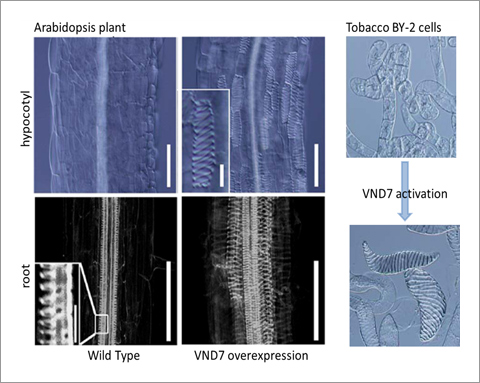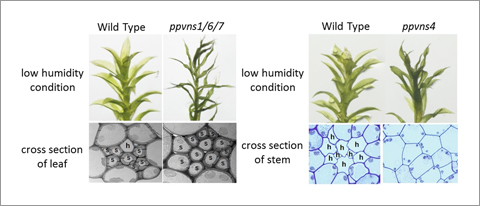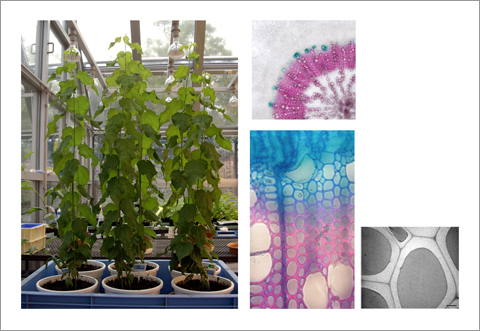
Research
About our Research
Outline of Research and Education
Our laboratory engages in research and education pertaining to the biotechnology needed to resolve the issues facing human beings in the 21st century, such as food, the environment, and energy. Based on omics technologies, we are clarifying the mechanisms for gene expression regulation for woody cell differentiation, to develop novel biotechnological tools leading to the establishment of sustainable society.
Major Research Topics
Analysis of molecular mechanism controlling xylem cells differentiation
Xylem functions in conduction of water and minerals throughout the plants, and supports the plant body. One of the features of xylem cells is development of secondary wall structure between plasma membrane and (primary) cell wall. Since woody biomass derived form xylem cells, xylem vessels and fiber cells, is one of important resources of land plant biomass, modifications of molecular mechanisms for xylem cell differentiation should be important strategies to improve plant biomass resources.
We identified a key regulator of the xylem vessel differentiation, Arabidopsis VND7 (Vascular-Related NAC Domain Protein7), which is one of plant-specific NAC domain transcription factor (Fig. 1). To understand the molecular mechanism by which xylem vessel formation is regulated, we have been characterizing VND7 and its homologs with various approaches. Recently we investigated the VND-homologous genes of moss Physcomitrella patens, and found that the VND-homologous genes function in the differentiation of water-conducting and supporting cells in the moss (Fig. 2). The VND-based molecular system is thus conserved among current land plants widely, suggesting that our findings can be applied to wide-range land plants to modify woody biomass.


Molecular and cell biological approaches to trees
We are also conducting genomics, transcriptome, proteome and metabolome studies to reveal the molecular system of plant biomass biosynthesis, using not only model plants but also non-model practical plants. Based on the obtained information, the designed transgenic poplars were generated and tested for the useful traits, such as higher stress tolerance, plant growth, and woody biomass accumulation (Fig. 3). These studies will give us the insights in effective biotechnological strategy to improve the quality and quantity of woody biomass.
